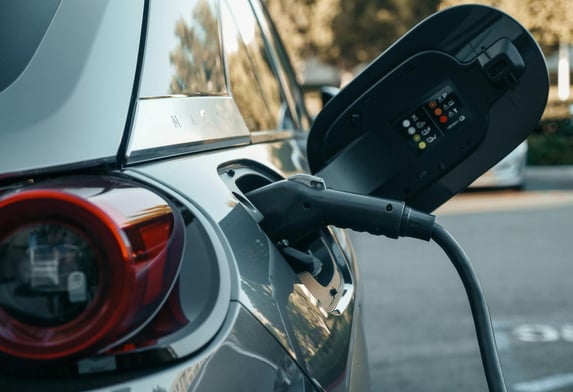E-Trike Operations
Explore innovative e-trike operations research topic ideas for 2025, focusing on sustainable transportation and the future of electric vehicles. Discover how e-trikes can revolutionize urban mobility and contribute to eco-friendly transport solutions.
QUANTITATIVE RESEARCH
Realyn Manalo
5/7/20254 min read


The Philippines is gearing up for a greener future, and President Marcos wants to make sure we don’t get left behind. In a recent meeting with science and tech officials, he stressed one key point: it’s easy to design an e-trike, but scaling it for mass use is the real challenge. While the technology is simple and proven, the country still struggles to attract enough investors to produce e-trikes at a level that can truly change our streets. That’s why the government is now focused on offering incentives and crafting solid policies to make the e-mobility industry more attractive to local and global players alike.
This push is especially important for the future of e-trike operations across the country. From Isabela to General Santos City, interest in electric tricycles is growing—both from drivers and LGUs. The Department of Science and Technology (DOST) is stepping in with plans to help mass-produce e-trikes and convert gas-powered units into cleaner alternatives. This not only promises cleaner air and lower fuel costs but also opens new job opportunities in maintenance and support services. With the right support and policies, e-trikes could soon become the backbone of everyday transport in the Philippines.
Who Can Use These Topics
This research is ideal for students and professionals pursuing the following courses or strands:
College Programs:
BS in Electrical Engineering
BS in Civil Engineering
BS in Urban Planning
BA in Sociology
BA in Community Development
BS in Environmental Science
BS in Public Administration
BS in Economics
BS in Transportation Engineering
Senior High School Strands:
Science, Technology, Engineering, and Mathematics (STEM)
Accountancy, Business, and Management (ABM)
TVL Track – Electrical Installation and Maintenance or Automotive Servicing
General Academic Strand (GAS)
Why This Topic Needs Research
Although e-trike technology has received national attention, several gaps remain in academic and practical exploration:
Limited integration of the three pillars of sustainability: Previous research often focused on design or return on investment without holistically evaluating social, environmental, and economic dimensions of service quality. This narrow approach limited understanding of what makes e-trike operations genuinely sustainable across regions (Gumasing et al., 2022).
Lack of long-term and renewable integration studies: While operational efficiency has been discussed, few studies have evaluated the viability of integrating solar or other renewable energy sources into e-trike systems. Future work must consider these to ensure resilience in energy sourcing (Nacion et al., 2022).
Absence of real-world energy performance data: Laboratory simulations are common, but studies have yet to capture road-based energy consumption under Philippine traffic and terrain conditions. This data is vital to guide realistic policy and investment (Sebwa et al., 2025).
Overlooked impact of urban infrastructure: Existing research has rarely explored how road features like bike lanes or elevation affect e-trike logistics. Urban planning and performance analysis would benefit from spatial mapping of these variables (Azad et al., 2025).
Inadequate location diversity in charging station planning: Several models for charging infrastructure have been developed but typically only consider high-traffic commercial zones. Research should expand to include community hubs and public areas to ensure accessibility (Wibisono et al., 2022).
Missing analysis of transport system integration: Despite high public acceptability, studies have not assessed how e-trikes interact with existing transport modes or traffic systems. Their introduction may have unintended consequences on traffic flow and modal competition (Marcelo et al., 2021).
Neglected motor performance under real loads
While e-trike conversions are cost-effective, gearless motors underperform on steep roads. More research is needed on torque enhancements and alternative motor systems to improve usability in rural and hilly terrains (Orpilla et al., 2022).
Feasibility & Challenges by Target Group
Get Your Free Thesis Title
Finding a well-structured quantitative research topic can be challenging, but I am here to assist you.
✔ Expertly Curated Topics – Not AI-generated, but carefully developed based on existing academic studies and research trends.
✔ Comprehensive Research Support – Includes an existed and updated research gaps, explanation of variables as well as SDG relevance.
✔ Personalized for Your Field – Get a thesis title tailored to your academic requirements and research interests.
Prefer video content? Subscribe to my YouTube Channel for expert insights on research topics, methodologies, and academic writing strategies.
References
Azad, M., Rose, W. J., MacArthur, J. H., & Cherry, C. R. (2023). E-trikes for urban delivery: An empirical mixed-fleet simulation approach to assess city logistics sustainability. Sustainable Cities and Society, 96, 104641.
Gumasing, M. J. J., Prasetyo, Y. T., Ong, A. K. S., Persada, S. F., & Nadlifatin, R. (2022). Analyzing the service quality of E-Trike Operations: A new sustainable transportation infrastructure in Metro Manila, Philippines. Infrastructures, 7(5), 69.
Marcelo, J. S., Parco, E. G., & Golpere, K. L. (2021). Acceptability of electric tricycle as a public transportation at bonifacio global city: basis for its implementation. Int. J. Manag. Stud. Soc. Sci. Res.(IJMSSSR), 3(2), 2582-0265.
Nacion, A. L. C., Dimla, R. B., & Soriano, D. D. (2022). An Operational Efficiency Assessment of E-Trike and Motorized Tricycles as Public Utility Vehicles. Int. J. Eng. Adv. Technol., 12, 76-81.
Orpilla, M., Tolentino, H., Ibanez, A., & Dumlao, F. (2022). Comparative Study Between Conventional and Converted Electric Tricycle. Available at SSRN 4207357.
Sebwa, O. S., Chombo, P. V., Gerutu, G. B., Kivugo, R. O., Hosea, J. H., & Greyson, K. A. (2025). Energy, Economy and Environmental Assessment of E‐Tricycle for Medium‐Size Cargo Deliveries: A Case of Dar es Salaam City. The Journal of Engineering, 2025(1), e70073.
Wibisono, I. B., Nugrahadi, B., & Sutopo, W. (2022). Development of Location-Allocation Model of Network Design for Battery Swapping Station and Battery Charging Station Facilities for E-Trike and E-Motorcycle. In Proceedings of the International Conference on Industrial Engineering and Operations Management. Istanbul (pp. 3022-3034).
